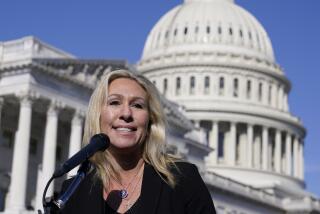Subprime meltdown culprits
As the cost of Wall Street’s credit crisis has mounted, the huntfor villains has intensified and the accusations of fault havewidened. At first the focus was on greedy profiteers among lendersand investment bankers, who were an easy (and deserving) target.Then the finger-pointing became politicized, with Democrats blamingderegulation advocates in the Bush administration and previousGOP-controlled Congresses, and Republicans citing influentialDemocrats at Fannie Mae and Freddie Mac and their allies on CapitolHill. Lately, even former Federal Reserve Chairman Alan Greenspan,who once incited hero-worship among lawmakers, has been heapedwith blame.
But it’s not just the rich and powerful who’ve been held up forscorn. Some politicians have also started pointing fingers towardthe bottom of the economic ladder, associating the problems in thefinancial markets with irresponsible low-income borrowers andadvocates for affordable housing. The latter include the controversialgroup ACORN,the Assn. of Community Organizations for Reform Now, which was bestknown as a lobbyist for low-cost housing before it gained infamyfor its fraud-tolerantvoter-registration drives. Had banks not been forced to makeloans to minorities and people with lower credit scores, somesay, the subprime meltdown would not have occurred.
Underlying this point of view is the belief that governmentregulation and intervention in markets cause more problems thanthey solve. In particular, thesecritics maintain that the 1977 Community ReinvestmentAct pushed banks to make bad loans by requiring them to servelow-income neighborhoods. Although the law set no lending quotas oreven targets, it enabled community groups to extract concessionsfrom banks that sought to expand or acquire rivals. ACORN, forexample, has used the CRA as leverage to compel banks to createpools of loans for low- and moderate-income families. Its effortshave generated about $6 billion in loans to these borrowers, whilealso generating funds for ACORN’s nonprofithousing corporation. Supporters call that a win-win scenario;critics say it’s legalizedextortion.
Linking the credit crisis to the push for more affordable housing,however, is blaming the victim. Had banks covered by the CRA beenthe driving force behind the boom in subprime lending, or hadFannie Mae and Freddie Mac been true to their mission of promotingaffordable homes and apartments, the housing market wouldn’t haveinflated as dramatically, and the pain wouldn’t have been as greatwhen the bubble burst. Borrowers made their share of mistakes andreckless decisions, but the more fundamental problem is that toomany mortgage brokers, lenders and investors stopped caring whetherloans could be repaid. They abandoned the underwriting standardsthat would have protected borrowers and lenders alike.
It’s easy to dismiss the rap against the CRA if you understand whyCongress enacted the law. Commercial banks’ reluctance to serveminority and low-income communities had left these areas open toexploitation by less savory sources of credit, such as paydaylenders. Consumer advocates pushed Congress to end this redliningbecause they wanted banks’ good lending practices to drivepredatory lenders out of those communities. The lawand subsequent regulations made clear that banks and thrifts werebeing asked to try harder to find capable borrowers, not to makeloans that were more likely to default. As the Federal ReserveBoard put it in RegulationBB, “[T]he board anticipates banks can meet the standards ofthis part with safe and sound loans, investments and services onwhich the banks expect to make a profit. Banks are permitted andencouraged to develop and apply flexible underwriting standards forloans that benefit low- or moderate-income geographies orindividuals, only if consistent with safe and soundoperations.”
Here are three more data points that show the CRA oraffordable-housing efforts in general can’t be blamed for thegrowth in subprime loans. Most subprime loansstarted with brokers and lenders not covered or affected by theCRA, such as now-defunct New Century Financial. Such loans wentmainly to middle- and upper-income borrowers . And the vastmajority were for home refinancing, not new purchases. The problemwith these refinancings was that they were built on sand -- theyexisted to generate fees for brokers and lenders and/or to tapequity that would evaporate soon after the bubble burst. Beyondthat, a recent study found that loan programs aimed specifically atlow-income borrowers have significantly lower default rates thansubprime loans in general.
The last things anyone wanted from the CRA were the exoticmortgages that have failed at alarming rates, including “liarloans” and “negative amortization” mortgages whose low paymentspushed borrowers deeper into debt. So why did those types of loansand other questionable practices proliferate? Because theygenerated higher returns for lenders and investors.
Consider what happened at Fannie and Freddie. Since 2000, theDepartment of Housing and Urban Development has required that atleast half of the mortgages purchased by the companies go to low-and moderate-income borrowers. To hit those targets, Fannie andFreddie -- whose underwriting standards prevented them from buyingmost types of exotic loans -- invested hundreds of billions ofdollars in subprime-backedmortgage securities. The loans underlying those securities,however, had little to do with helping low- and moderate-incomefamilies buy homes. Instead, they were refinancings that pulledmoney out of homes people already owned. No question, Fannie andFreddie’s demand for securities poured gas on the red-hot subprimemarket. But the companies lost half theirshare of that market during the boom years from 2004 to 2006,so they clearly weren’t the only sources of fuel. Congress needs toresolve the tension at Fannie and Freddie between shareholderreturns and HUD targets. But as they do so, lawmakers shouldn’t pinthe rap for the larger credit crisis on affordable housing.
More to Read
A cure for the common opinion
Get thought-provoking perspectives with our weekly newsletter.
You may occasionally receive promotional content from the Los Angeles Times.










